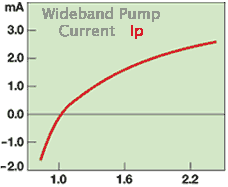
The single most expensive and vital component of the DIY-WB kit is the NTK wide band sensor (also called a UEGO, or Universal Exhaust Gas Oxygen sensor). The DIY-WB kit works ONLY with a specific 5 wire NTK sensor (with a 7 pin plug). This sensor is available as a replacement part for a Honda (part # 36531-P07-003 - Honda Civic 1.5 3 Door, circa 1995, US, non-Californian model). The NTK sensor is stamped with the text L1H1 and is often referred to using this name. Napa have recently found stocks of the L2H2 and we have found this sensor works too. Any other sensor will not work and may damage your DIY-WB circuit. The sensor requires an 18 mm bung with 1.5 threads/mm pitch (this is one of the standard lambda sensor & sparkplug base sizes). |
The following can supply the correct NTK sensor. Note that the links may not always show the correct part if they are out of stock.
- ShoNut Performance - select the Misc. link at the top of the page.
- AutoZone part 36531P07003 for 1985 HONDA CIVIC 4 Cylinders 01488 1.5L 3BL
- The Parts Bin, or go to their catalogue entry - C5010-75044 - see RED note above.
- NAPA Online, or go to their catalogue entry - ECHOS791
- www.OxygenSensor.net or go to their L1H1 Catalogue entry.






